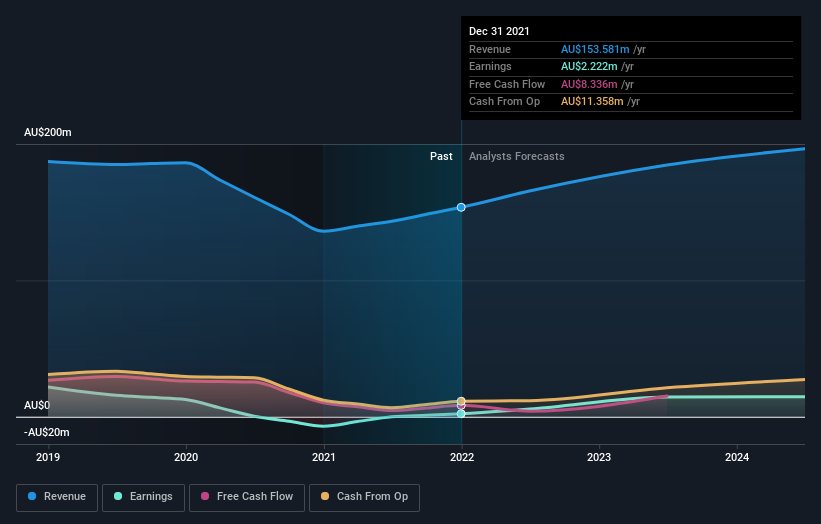We’re definitely into long term investing, but some companies are simply bad investments over any time frame. It hits us in the gut when we see fellow investors suffer a loss. Anyone who held GTN Limited (ASX:GTN) for five years would be nursing their metaphorical wounds since the share price dropped 81% in that time. The last week also saw the share price slip down another 5.7%. We really feel for shareholders in this scenario. It’s a good reminder of the importance of diversification, and it’s worth keeping in mind there’s more to life than money, anyway.
Now let’s have a look at the company’s fundamentals, and see if the long term shareholder return has matched the performance of the underlying business.
View our latest analysis for GTN
There is no denying that markets are sometimes efficient, but prices do not always reflect underlying business performance. One way to examine how market sentiment has changed over time is to look at the interaction between a company’s share price and its earnings per share (EPS).
During five years of share price growth, GTN moved from a loss to profitability. That would generally be considered a positive, so we are surprised to see the share price is down. Other metrics may better explain the share price move.
Arguably, the revenue drop of 5.2% a year for half a decade suggests that the company can’t grow in the long term. That could explain the weak share price.
You can see below how earnings and revenue have changed over time (discover the exact values by clicking on the image).
We know that GTN has improved its bottom line lately, but what does the future have in store? You can see what analysts are predicting for GTN in this interactive graph of future profit estimates.
What about the Total Shareholder Return (TSR)?
We’d be remiss not to mention the difference between GTN’s total shareholder return (TSR) and its share price return. The TSR is a return calculation that accounts for the value of cash dividends (assuming that any dividend received was reinvested) and the calculated value of any discounted capital raisings and spin-offs. GTN’s TSR of was a loss of 78% for the 5 years. That wasn’t as bad as its share price return, because it has paid dividends.
A Different Perspective
GTN shareholders are up 7.5% for the year. But that return falls short of the market. On the bright side, that’s still a gain, and it is certainly better than the yearly loss of about 12% endured over half a decade. It could well be that the business is stabilizing. It’s always interesting to track share price performance over the longer term. But to understand GTN better, we need to consider many other factors. Consider risks, for instance. Every company has them, and we’ve spotted 2 warning signs for GTN you should know about.
If you are like me, then you will not want to miss this free list of growing companies that insiders are buying.
Please note, the market returns quoted in this article reflect the market weighted average returns of stocks that currently trade on AU exchanges.
Have feedback on this article? Concerned about the content? Get in touch with us directly. Alternatively, email editorial-team (at) simplywallst.com.
This article by Simply Wall St is general in nature. We provide commentary based on historical data and analyst forecasts only using an unbiased methodology and our articles are not intended to be financial advice. It does not constitute a recommendation to buy or sell any stock, and does not take account of your objectives, or your financial situation. We aim to bring you long-term focused analysis driven by fundamental data. Note that our analysis may not factor in the latest price-sensitive company announcements or qualitative material. Simply Wall St has no position in any stocks mentioned.

